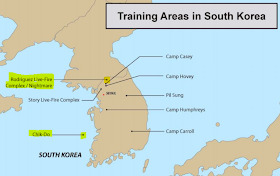Which brings me to yet another unconnected topic, the strand jack. Back when I worked in construction with my brothers, one tool that we greatly admired was the railroad jack, a heavy duty (and also very heavy) manually-operated jack sturdy enough to lift a bridge beam.
Railroad jacks push; strand jacks pull (more on that below). Here's a big strand jack, from mammoet.com:
(For those who might wonder what heavy riggers do, Mammoet does stuff like this, delivering coking units:)
Now about strand jacks, which will be critical to the success of salvage work coming up at Costa Concordia. First, the big picture, from Corriere Etrusco:
As animated in the Parbuckling Project, salvors will be pulling the cruise ship upright (that is, rotating the ship so that the superstructure moves to the left, in this photo), refloating the ship, and towing it to a drydock for scrapping.
While that may not sound too difficult, it is, for many reasons. And it's why the insurers' cost estimates are now edging $400 million.
Here's one reason for the high cost: Concordia is huge and its hull came to rest sideways on two subsea promontories, one fore and one aft. So that means the midships is sagging. While a gang of strand jacks can move any artificial object that mankind cares to build, however large, they can also tear it apart. If salvors were to just start using them to drag the ship upright, the tension on that unsupported midsection would break the hull in half.
So they've been laying down 20,000 tons of cement grout in big bags, filling in the valley (temporarily) to give the hull a sturdier foundation before the hydraulics do their stuff.
Recently Salvors have started the next phase, attaching big steel boxes called caissons to the port side. These caissons will be filled with water, and then it's time for the strand jacks. Here are a couple of the big blue machines, hanging from a formidable crane hook (Photo, Parbuckling Project):
Setting aside the caissons, here's a Parbuckling Project illustration showing how the strand jacks will be lined up along the port side, working in unison to drag the ship upright.
The term strand jack comes from the fact that it exerts force on strands, commonly steel cables. Think of how you'd lift a bucket on a rope, hand over hand: one of your hands pulls on the rope, as the other shifts to get a new grip.
It's the same with strand jacks, which use hydraulic grips to pull cables a few inches at a time. Commonly the jacks work in groups under computer control.
Strand jacks are slow but very powerful. In 2004, strand jacks raised a 2,000-ton section of roof at the Wembley Soccer Stadium (Photo, Engineering News-Record):










